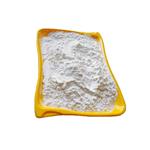Description
As a highly insoluble thermally stable Samarium source, Samarium Oxalate has specialized applications in glass, ceramic, phosphors, lasers, and thermoelectric devices, etc. Another essential application of Samarium and its compounds is used as catalyst and chemical reagent, which is effective to catalyze dehydration of acyclic primary alcohols to aldehydes and ketones. In its usual oxidized form, Samarium can be added to ceramics, optical and infrared absorbing glass in which it increases absorption of infrared radiation. It has also proved to be used as a neutron absorber in control rods for nuclear power reactors.
Besides, Samarium oxide can be used in preparation of other samarium salts upon evaporation and crystallization by dissolving in mineral acids. Samarium oxide is acquired by burning the metal in air or oxygen over 150℃ or by decomposing samarium carbonate, nitrate, oxalate or sulfate thermally.

Uses
Samarium Oxide, also called Samaria, Samarium has a high neutron absorption capacity, Samarium Oxides have specialized uses in glass, phosphors, lasers, and thermoelectric devices. Calcium Chloride crystals treated with Samarium have been employed in lasers which produce beams of light intense enough to burn metal or bounce off the moon. Samarium Oxide is used in optical and infrared absorbing glass to absorb infrared radiation. Also, it is used as a neutron absorber in control rods for nuclear power reactors. The Oxide catalyzes dehydration of acyclic primary alcohols to aldehydes and ketones. Another use involves preparation of other Samarium salts.
References
https://en.wikipedia.org/wiki/Samarium(III)_oxide
http://www.metall.com.cn/sm.htm
http://www.reade.com/products/samarium-oxide-sm2o3
https://www.americanelements.com/samarium-oxide-12060-58-1
Chemical Properties
light beige crystalline powder
Physical properties
Yellowish-white powder; density 8.347g/cm
3; insoluble in water; dissolves readily in mineral acids.
Uses
Samarium(III) oxide is used in optical and infrared absorbing glass to absorb infrared radiation. It finds use as a neutron absorber in nuclear power reactors to control the reaction. It is also used as a catalyst for the dehydration of primary alcohols to aldehydes or ketones. It forms samarium perchlorate when treated with perchloric acid, which is used as a reference material for checking the wavelength scale of a spectrophotometer in the range of 200 to 500 nm.
Uses
Samarium sesquioxide is used in optical and infrared absorbing glass to absorb infrared radiation. Also, it is used as a neutron absorber in control rods for nuclear power reactors. The oxide catalyzes dehydration of acyclic primary alcohols to aldehydes and ketones. Another use involves preparation of other samarium salts.
Preparation
Samarium sesquioxide may be prepared by two methods; (1) thermal decomposition of samarium carbonate, hydroxide, nitrate, oxalate or sulfate:
Sm
2(CO
3)
3 → Sm
2O
3 + 3CO
22Sm(OH)
3 → Sm
2O
3 + 3H
2O
or (2) by burning the metal in air or oxygen at a temperature above 150°C:
4Sm + 3O
2 → 2Sm
2O
3.
reaction suitability
reagent type: catalyst
core: samarium





